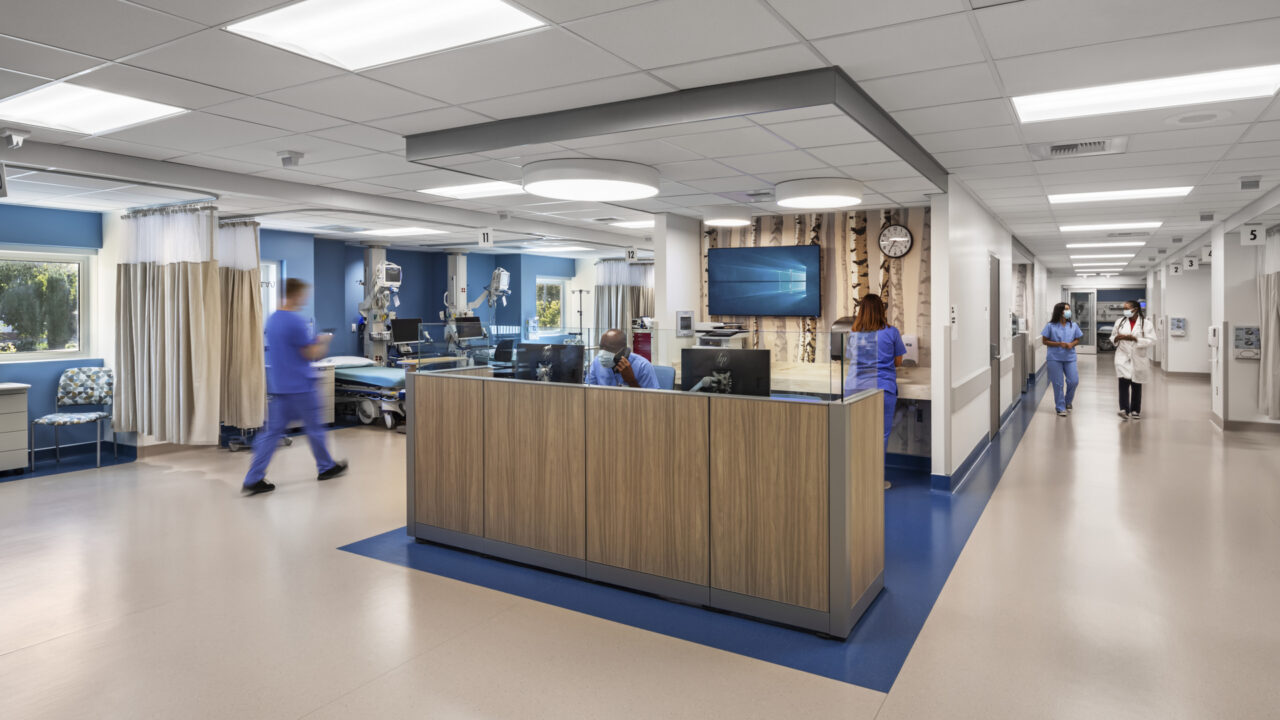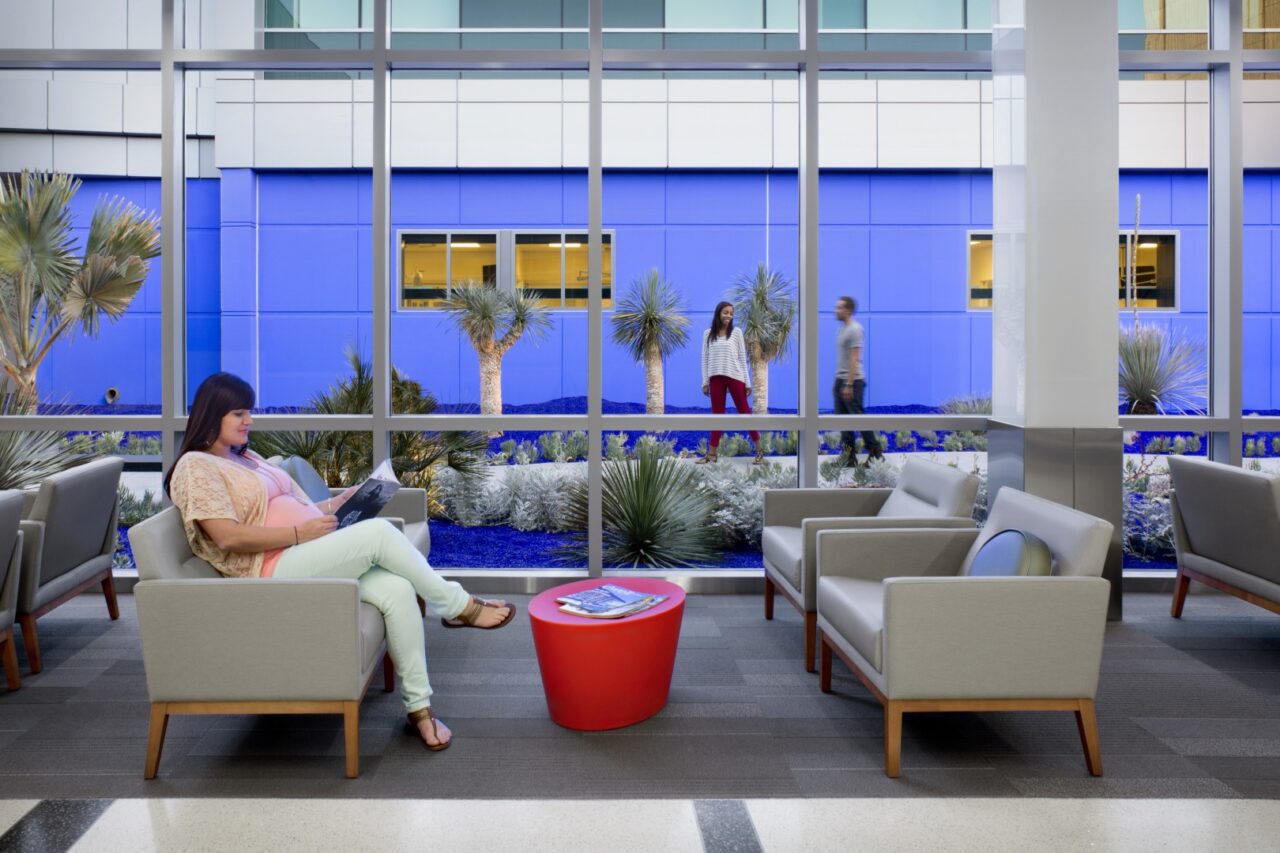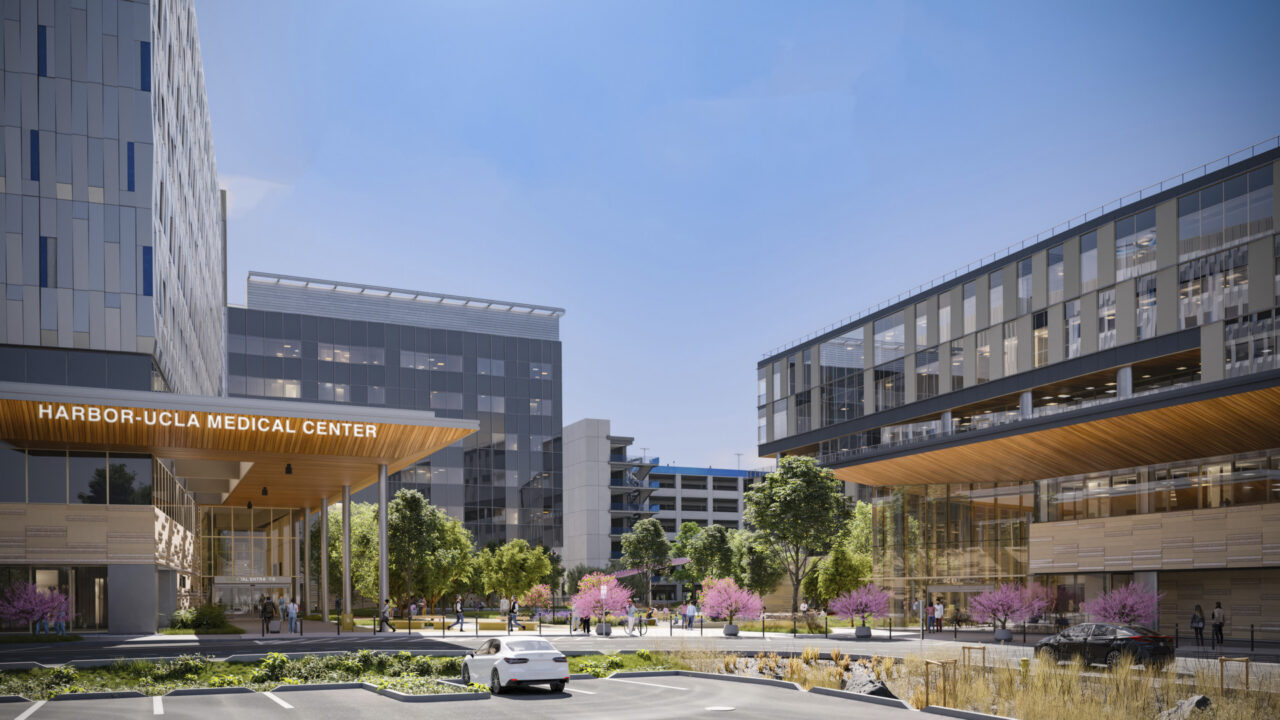Welcome to Five in Focus, HMC Architects’ blog series spotlighting the trends, ideas, and innovations shaping the future of architecture and design. Each edition features insights from our design leaders as they share what inspires them and how it informs their work.
In this installment, Dena Null, healthcare principal at HMC, reflects on what MAX’s hit TV show The Pitt tells us about healthcare design.
As a healthcare leader and medical planner, I rarely have time to watch TV between work and travel, but my daughters insisted I check out a show on MAX called The Pitt, saying it reminded them of the stories I’ve shared about my work. Curious, I decided to watch, and just like that, I fell into The Pitt. With gritty realism and input from real clinicians behind the scenes, the show doesn’t just dramatize medicine—it reveals the complex emotional, operational, and spatial realities of emergency care. And for those of us designing the future of healthcare, it offers some striking reminders of where we can—and must—do better.
1. Collaboration Isn’t Just a Buzzword—It’s Survival
Every second counts in emergency care. Watching The Pitt’s high-stakes trauma scenes, I find myself rethinking clinical layouts: Are rooms truly optimized for rapid response? Can care teams move fluidly from the trauma bay to the OR? Designing for adjacency, sightlines, and intuitive flow is essential, not just for efficiency, but for enabling the best possible care and saving lives. I experienced this firsthand during the height of the COVID-19 pandemic, when I was contracted as a senior medical planner with the U.S. Army Corps of Engineers. In that role, we were tasked with transforming stadiums into 1,000-bed emergency hospitals in just three to five days.
The challenge was immense, and true collaboration across architects, engineers, contractors, clinicians, and military teams made it possible. Working shoulder to shoulder, we made rapid decisions in real time to create safe, functional care environments. That experience demonstrated how the power of trust and collaboration is essential to achieving high performance. It was the deep trust, servant leadership, and shared sense of purpose that made genuine collaboration possible. There was no time for frustration and no room for blame when things went wrong—only time to solve problems together and keep moving forward.

Lawrence Anderson Photography
2. Empathy Is a Design Driver
The show is relentless in portraying the emotional toll on patients and caregivers. It reminds me that design must go beyond function—we must create environments that support emotional resilience. This includes spaces for families to wait with dignity, areas for private conversations, and materials that soften the clinical edge while upholding performance standards. Few design challenges are as profound as creating a space where someone may learn their loved one has passed; these moments deserve environments that honor privacy, compassion, and humanity.

David Wakely Photography
3. Staff Wellness Is Central to Patient Care
Burnout isn’t background noise—it’s a central character in The Pitt. That drives home the need for meaningful staff respite zones, natural light, calming acoustics, and spatial logic that reduces stress. Just as we design spaces for patients and families to heal, we must design environments that allow caregivers to recharge, refocus, and maintain their well-being. After all, staff care is patient care, and our designs need to reflect that interconnectedness. Caring for the caregiver ensures they are better equipped to serve and care for patients and visitors.

Lawrence Anderson Photography
4. Community Connection and Trust Start at the Door
The Pitt also reveals that hospitals are more than just buildings—they’re lifelines, institutions of trust. Architecture plays a huge role in how communities see and experience healthcare. Branding, wayfinding, and welcoming public zones all contribute to a facility’s mission and message. A hospital’s design can speak volumes before a word is ever spoken. Community connection and trust don’t just happen—they begin before arrival. Thoughtful attention to the arrival experience, including accessibility, signage, and welcoming design, helps patients and families feel seen and safe. Understanding the community’s demographics, addressing language differences, and proactively removing barriers—whether physical, cultural, or systemic—are critical to creating an inclusive environment. By meeting people where they are, we foster trust, belonging, and ultimately, greater patient satisfaction.

5. Simulation-Based Design Isn’t Optional—It’s Essential
What’s most striking is how The Pitt reminds us that real lives unfold in these environments every day. That’s why we must continue to design with clinicians, not just for them. Simulation labs, user testing, and close collaboration with nurses, techs, and physicians help us build spaces that work under pressure—and for the people who keep them running. Skipping this step is a missed opportunity to identify critical flaws before they impact care. Simulation-based design is a safeguard, ensuring that what looks good in appearance or on paper truly functions in practice when every second counts.
What drew me into The Pitt is that it doesn’t sugarcoat the realities of modern medicine, and that’s why it resonates. For me, it’s also a powerful call to action. The more we listen, observe, and engage with those on the front lines, the better we can design environments that heal, uplift, and endure. Most importantly, it’s a reminder to honor and thank the incredible healthcare professionals who show up every day to deliver care with courage, compassion, and skill.
